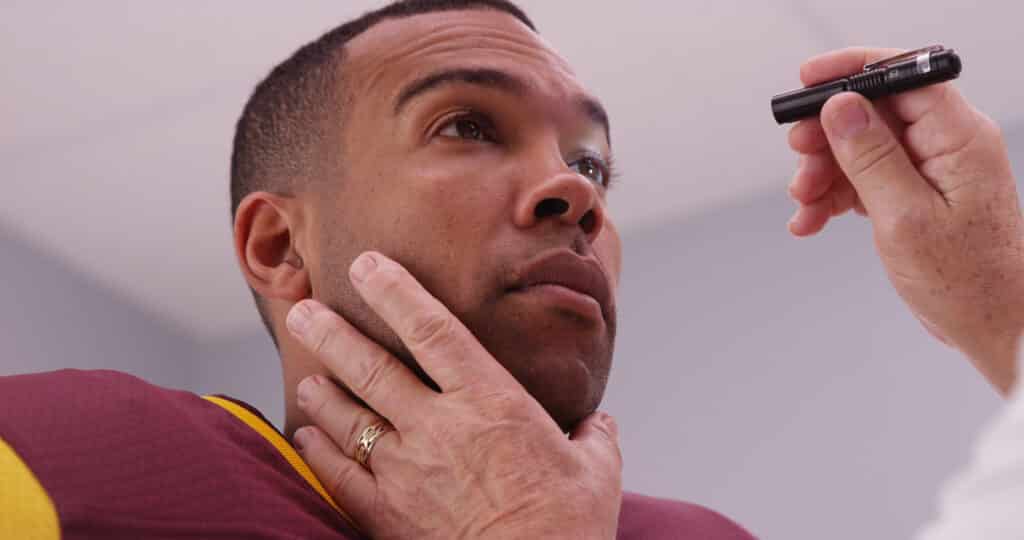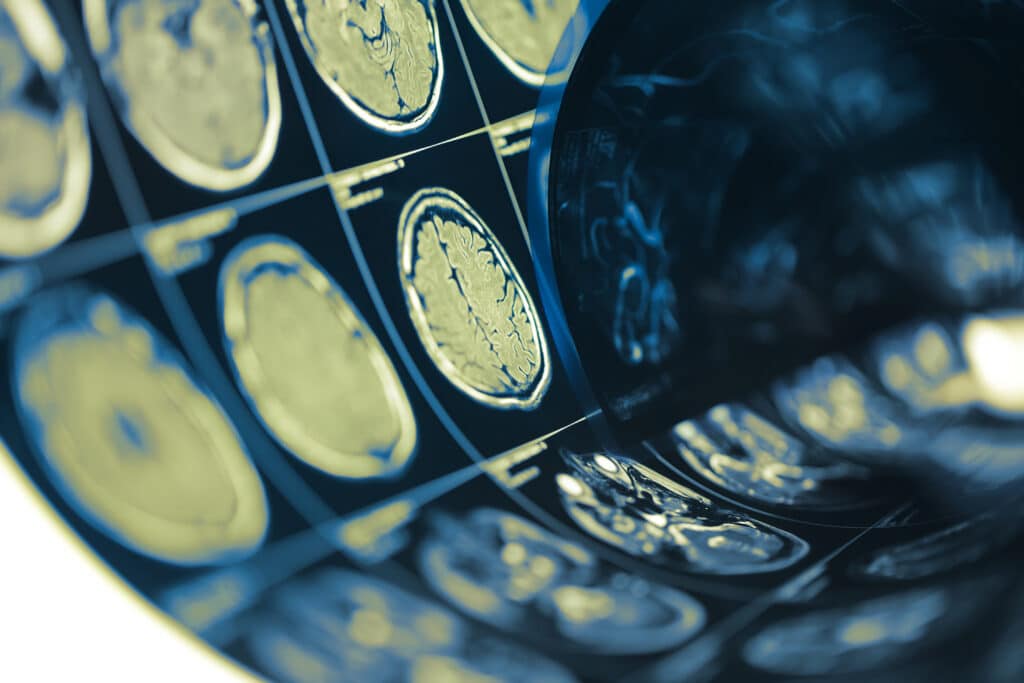Traumatic brain injuries are serious threats to individuals’ physical and mental wellbeing. They impact athletes and non-athletes alike, and understanding them is the key to their treatment and prevention. In this article, we discuss the ramifications of concussion/mTBI, its pathophysiology, and the basic tools used to diagnose it. The study and treatment of concussion/mTBI is a rapidly evolving field, and physicians and individuals should stay abreast of current research.

The Definition and Classifications of Traumatic Brain Injuries
Traumatic brain injuries (TBI) can follow an impact to the head, such as a blow or jolt, and can cause chemical changes within the brain or damage to brain cells. They vary in severity and are classified accordingly, taking into account how quickly patients can open their eyes, what their vocal responses are like, and how cognizant their motor responses are. The Glasgow Coma Scale (GCS) has historically been a common method for differentiation.
mTBI
mTBI stands for mild traumatic brain injury. “Mild” has less to do with the severity, instead indicating that overt structural brain damage is absent. mTBIs are non-penetrating, functional, and often temporary. They are always not visible on imaging, leading to high incidence of cases which go undiagnosed and untreated. mTBI is the most commonly sustained classification of brain trauma.
A concussion is a functional injury, the mildest form of mTBI. In fact, the two terms are often used synonymously. Which term is used depends chiefly on the kind of literature, sports literature usually defaulting to the term concussion and neurologic literature using “mTBI.” The medical field is in transition, considering “concussion” to be outdated terminology, though the Concussion in Sport Group has recommended that the terms be distinct, with concussion indicating complete recovery and associating mTBI with more persistent symptoms.

MTBI/STBI
Moderate and severe TBI indicate structural damage that can clearly be seen via imaging. Moderate and severe TBI result in unconsciousness of greater than 30 minutes and amnesia for longer than 24 hours. Their Glascow Coma Scale values fall below 13. Examples include epidural hematoma, subdural hematoma, subarachnoid hemorrhage, intracerebral hemorrhage, and intraventricular hemorrhage.
The Epidemiology of Concussion/mTBI.
Based on available data, there are an estimated 48 million cases of concussion/mTBI in the US each year. 3.8 million of those are sports-related concussions, while 240,000 are the result of motor vehicle accidents. Concussions now represent almost 10% of all injuries for both youth and collegiate players.
The literature—based on reported values—shows that a higher percentage of sports-related concussions are sustained during gameplay than in practice. Men’s rugby is the chief offender, with men’s US football and women’s ice hockey taking second and third place, respectively. The only sport for which the practice rate of concussions appears to be greater than those sustained during gameplay is cheerleading, usually as the result of 2+ level pyramids.
It is estimated that half of all sports-related concussions go unreported, though that figure appears to be shrinking as concussion awareness improves There has been a cultural shift where parents are keeping children out of sports to avoid the risk of concussion. Without other exercise, however, the risk of obesity and other related health concerns increases.
Research indicates that medical schools do not prioritize recognizing diagnosing concussion/mTBI. Another study performed in 2016 found that knowledge about concussion was comparable between medical students and chiropractic students. There is certainly room for improvement to minimize knowledge gaps. According to the comparison of studies conducted in 2012 and 2018, Canadian medical schools were taking this improvement of the concussion curriculum to heart.

The Pathophysiology of Concussion/mTBI
Concussions have been found (relatively recently) to primarily affect the white matter of the brain. This makes up about 60% of the brain and doesn’t finish developing until after middle age. White brain matter is responsible for communication within the brain and with the rest of the body.
At the impetus of head injury, a series of neurochemical reactions results in an ion imbalance. This causes neuronal dysfunction and increased activation which creates an energy crisis where ATP cannot be made in appropriate volumes. In cases of severe TBI, the damage to brain cell mitochondria can be permanent. Concussion also affects cerebral blood flow.
The symptoms of concussion are varied and affect different parts of the brain:
- Physical—headache, dizziness, amnesia, nausea, fatigue, vomiting, blurred vision, tinnitus, sensitivity to light or sound
- Cognitive—slower reaction times, confusion, “fogginess,” difficulty learning, forgetfulness
- Emotional and Behavioral—sadness, changes in personality, anxiety, increased impulsivity, easily irritated, increased emotionality, nervousness, depression
- Sleep—nonrestive sleep, oversleeping, disturbed sleep cycle, difficulty falling asleep
Severity of symptoms are given by the patient on a 0–6 scale. The effects of concussion/mTBI are cumulative. Two trauma events in close temporal proximity increases the risk of irreversible brain damage, especially when the second event is delivered within a period of vulnerability. This makes diagnosing and treating concussion/mTBI properly even more urgent. Athletes and non-athletes should not “shake off” head injuries, instead receiving the proper care and allowing adequate time to heal. The Google-generated recovery estimate of 7–10 days is misinformation.

